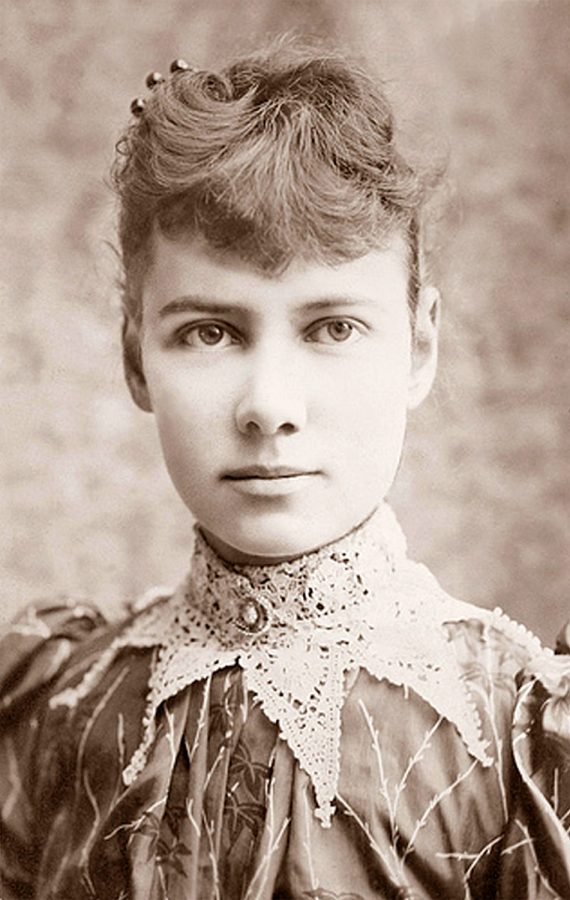Thank Nellie Bly for the creation of investigative journalism
March 25, 2022
In 1972, the investigative work of The Washington Post reporters Bob Woodward and Carl Bernstein paid off and exposed deep corruption in the presidential administration of Richard Nixon.
However, they would have never been able to break the story and reach lifelong fame over the Watergate scandal if it were not for the female icon journalist Nellie Bly, who created the field of investigative reporting.
Bly was an American journalist in the late 1800s and early 1900s, who is best known for her investigative story exposing horrible conditions at a New York City mental asylum.
Born on May 5, 1864, as Elizabeth Jane Cochran in Pittsburgh, Pennsylvania, Bly came from a well-off family until the head of the household and family business, her father, died when she was 6-years-old.
Bly never finished school but attended some of college, where she changed her last name from Cochran to Cochrane.
After reading a sexist article in her local newspaper in 1885, the Pittsburgh Dispatch, titled, “What Girls are Good For,” Bly wrote an angry letter to the editor expressing how harmful a story like that could be.
The paper’s editor was so impressed with her writing and passion that he not only ran the letter but also offered her a job. This is when she picked up the pen name Nellie Bly, which she would be known as for the rest of her life and legacy.
For the Dispatch, Bly began writing about “working girls and slum life.” She was one of the first women of her time to be permitted to write stories for a newspaper outside of the women’s pages, which covered fashion and high society — what men of the time thought women cared about.
In 1886 and 1887, Bly traveled through Mexico reporting on governmental corruption and the living conditions of the poor. Her work got her kicked out of the country and she had to return to America. She published a book, “Six Months in Mexico,” in 1888 about her time there.
After returning from Mexico, Bly moved to New York City and was able to get a job at The New York World, which was run by Joseph Pulitzer — yes, Pulitzer as in the Pulitzer Prize.
It was here that she did her best-known story. She went undercover as a mentally ill person to be admitted to the mental asylum on Roosevelt Island, back then called Blackwell’s Island. In her 10-day stay in the hospital, she uncovered poor treatment of the patients by the staff.
The asylum ended up going under a grand jury investigation, and more attention in general
was brought to the treatment of the mentally ill. Her work was published as the book, “Ten Days in a Mad House.”
Bly used similar undercover tactics to report on sweatshops, jails and even the government. This was the start of investigative journalism — and we all owe her a big thanks for bringing about one of the most important types of journalism that exist.
The last famous story that Bly worked on was traveling around the world. A popular novel called “Around the World in 80 Days” prompted her to try it for herself.
She rode on ships, trains, rickshaws, sampans, horses and burros and in 72 days, Bly had traveled around the world. This trip cemented her popularity and she published “Around the World in 72 Days” based on it.
Bly should be honored for her amazing work as a journalist, not just during Women’s History Month and in times when the work of journalists is getting a lot of attention — like during an international war or a pandemic — but always.
After all, without her, there’s a good chance the world would have never found out about Watergate.








